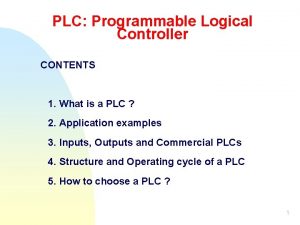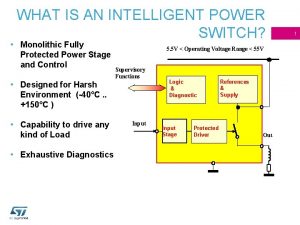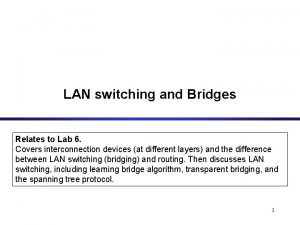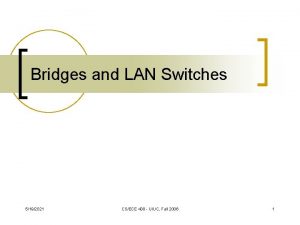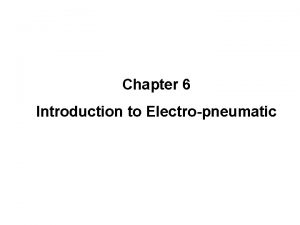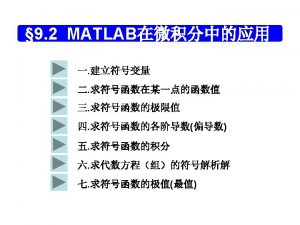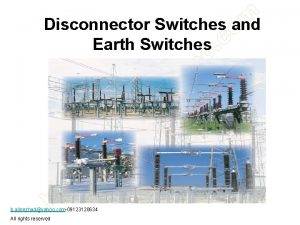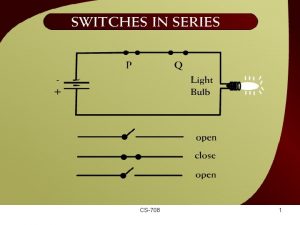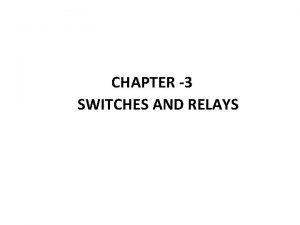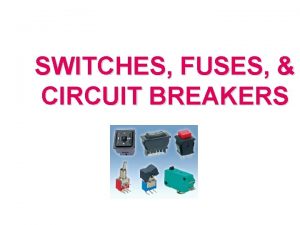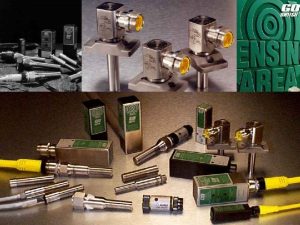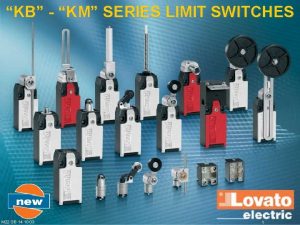Limit Switches What are some different types of

















- Slides: 17

Limit Switches • What are some different types of limit switches? – Upper and lower limit switches • Must have a minimum of 2 complete wraps of rope on the drum – Travel limit switches • These are used on the trolley and/or bridge to limit the distance they can travel under power. – Proximity limit switches • Limit the distance between 2 overhead cranes on the same runway • All of these must be tested with no load on the hook. 1

Electrical Disconnect • Confirm it is marked and does work for your crane – Some will shut down the crane, but leave the conductor rail hot – Others will shut down the entire runway system • Kaiser Aluminums disconnects are Turquoise and Yellow barber pole striped • (DO NOT operate the disconnect except in an emergency, the crane crew or maintenance will perform any needed lockouts. ) 2

Unusual Noises/Conditions 3

Brakes & Vacuum Testing • Check to ensure that brakes work properly: Hoist and Cab-operated bridge brake. – The hoist (holding) brake is the most important brake on the crane! • When performing a vacuum test, if you lose 8 psi of pressure in 2 minutes or less, it has failed the vacuum test. Notify your supervisor, and have crane crew come down to repair it. – Example: If you are at 28 psi, and it goes down to 20 psi, then you have failed the vacuum test. 4

5

Section # 4 Limits of Operations 6

Environmental Conditions • Observe and take into consideration the environmental conditions. • Areas of: – High heat – Humidity – Acidic environments • Hot line and casting are great examples • External conditions such as: – Snow/Ice – Rain/Thunder/Lightning – High winds 7

Shock Loading • Can be introduced through a variety of different movements – Most commonly associated with: • Sudden starts • Stops • Or drops • Shock loading can increase the load’s weight to well beyond the cranes safe working limits. • Most rigging is designed to withstand loads up to 5 x its rated load capacity but will fail beyond that Dynamic Loading • Occurs when there is any movement of the hoist line other than a straight vertical line • Can cause a condition known as “side loading” – Under the right conditions can result in overhead crane/hoist failure • Can be induced by: – Rapid starts or stops • Results in a pendulum swinging motion – Pulling of the load across the ground or surface – Or pulling the load away from the machine 8

Load Conditions • What are some load conditions and how can they affect the overhead crane or hoist? • Unbalanced loads – Can move or shift during the lift, causing shock loading • Tanks with liquid can move inside – Causing the load to swing, creating dynamic loading • Loose bundles can shift or move – Causing shock as well as dynamic loading 9

Control of Work Area • What is the work area? • Control the work area – Area that is Under, Around, or Near the hook, crane, load path, or load. – Only allow those team members directly involved in the lift into the work area. – As a best practice team members should maintain a distance of 1 ½ time the height of the load away from the center line of the load. – Use barricades, fencing, caution tape or other means to identify to work area. – Setup a safety watch in the work area. All team members should remain a safe distance away from the suspended load. 10

Accurate Communications • The use of accurate communications between the operator, and the signal person is imperative • There are two forms of communication used at Kaiser Trentwood: – Two-way radio – Hand signals • Hand signals are the most common form used in industry – Two versions • Mobile Cranes • Overhead Cranes • Signals shall be given by one (1), person at a time – When more than one (1), person is signaling the operator shall stops all functions until one (1), signal person is designated 11

Standard Hand Signals for Controlling Overhead & Gantry Crane Operations HOIST LOWER With forearm vertical, forefinger pointing up, move hand in small horizontal circle. With arm extended downward, forefinger pointing down, move hand in small horizontal circle. 12

Standard Hand Signals for Controlling Overhead & Gantry Crane Operations BRIDGE TRAVEL TROLLEY TRAVEL With arm extended forward, hand open & slightly raised, make pushing motion in direction of travel. Palm up, fingers closed, thumb pointing in direction of motion, jerk hand horizontally. 13

Standard Hand Signals for Controlling Overhead & Gantry Crane Operations STOP Arm extended, palm down, move arm back and forth horizontally. EMERGENCY STOP Both arms extended, palms down, move arms back and forth horizontally. 14

Standard Hand Signals for Controlling Overhead & Gantry Crane Operations MULTIPLE HOIST Hold up one finger for block marked “ 1” & two fingers for block marked “ 2”. Regular signals follow. MOVE SLOWLY Use one hand to give any motion signal & place other hand motionless in front of hand giving the motion signal. (Hoist Slowly shown as example. ) 15

Only Designated Personnel Shall Be Used As Crane Operators. OSHA 1910. 179(a)(15) "Appointed" means assigned specific responsibilities by the employer or the employer's representative. 1910. 179(a)(35) "Designated" means selected or assigned by the employer or the employer's representative as being qualified to perform specific duties. 1910. 179(b)(8) Designated personnel - Only designated personnel shall be permitted to operate a crane covered by this section. 16

Thank you for attending! Any Questions? Contact Information Steve Bacheller Steve. Bacheller@kaisertwd. com Randy Robinson Randy. Robinson. Jr@kaisertwd. com 17
 Antigentest åre
Antigentest åre Limit switches
Limit switches Upper specification limit and lower specification limit
Upper specification limit and lower specification limit Natural variations operations management
Natural variations operations management Pengertian limit
Pengertian limit Vni2140
Vni2140 Benes network
Benes network Kundan switches models
Kundan switches models Which chemical reaction switches 2 elements
Which chemical reaction switches 2 elements Bridges vs switches
Bridges vs switches Rv220w dual gigabit wan vpn router
Rv220w dual gigabit wan vpn router Cisco 100 series switches
Cisco 100 series switches Bridges vs switches
Bridges vs switches Indirect control of single acting cylinder
Indirect control of single acting cylinder Mercury switches in cars
Mercury switches in cars Magnetic quadrupole
Magnetic quadrupole Two technicians are discussing schematic symbols
Two technicians are discussing schematic symbols High performance switches
High performance switches

